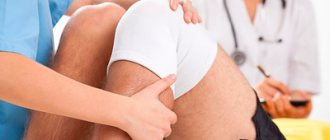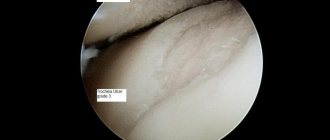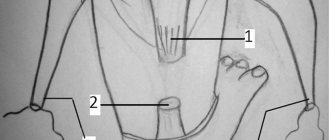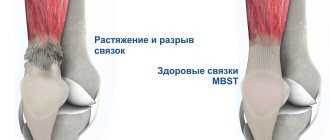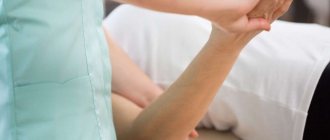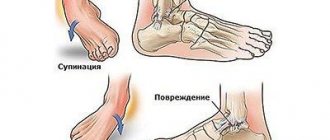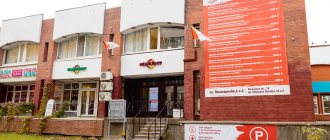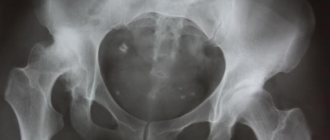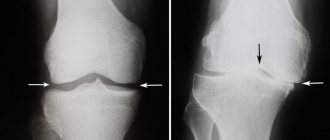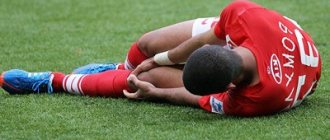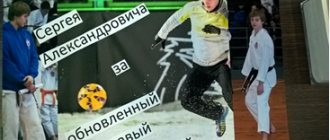Knee rehabilitation
Physical therapy for any fractures, dislocations and bruises begins on the second day after the injury.
The frequency and duration of classes depend on the severity of the pathology. Our task is to properly organize the work of anyone who comes to our clinic and develop an individual system for restoring the body. This ensures steady positive dynamics. An orthopedic traumatologist will prescribe you an individual course of rehabilitation (physical therapy, physiotherapy, massage, imperative corrective gymnastics on simulators, mechanotherapy and other methods). We use our own method in the treatment of the knee joint.
At the BRT rehabilitation center, treatment is possible both on an outpatient basis and in a residential clinic. Comfortable conditions, effective treatment and rehabilitation under the supervision of rehabilitation doctors. Accommodation is possible with accompanying persons, hotel-type rooms, meals, a range of rehabilitation measures. Individual treatment programs.
Joint problems
Problems with joints are not subject to time, age, or lifestyle. They occur in young, adult and elderly people, both in professional athletes and in people who rarely engage in sports.
In youth - most often these injuries are associated with sports, hard work, accident or heredity. In older age, problems manifest themselves as a result of: a sedentary lifestyle, degenerative changes in joint and periarticular tissues that arise from physical inactivity; obesity and the increased risk of injury along with it.
In old age, all the injuries and microtraumas received over a lifetime make themselves felt. Degenerative processes are only accelerating, and immune resources are no longer enough to recover and stop the course of the disease.
As we see, no one can be sure that he will not be at risk of getting a joint injury. And every orthopedist and rehabilitation specialist will tell you the fact that joints need to be treated immediately when you feel discomfort.
The most common injuries that patients come to us with:
- shoulder injury;
- elbow joint;
- wrist and hand;
- hip joint;
- knee joint;
- ankle and foot;
What is included in the rehabilitation treatment program:
We have the ability to provide residential or outpatient treatment. At the initial appointment, the doctor will determine the individual characteristics of the patient, the nature of the disease, and familiarize himself with the available research. Next, the rehabilitation task is formed depending on the wishes of the patient and the nature of the disease or injury. Experienced specialists will develop a complex of rehabilitation therapy for you, taking into account your body condition. Professional and well-structured rehabilitation is a guarantee of a return to an active, fulfilling life, and effective recovery methods and a homely atmosphere and comfort help you return to an active life! Since the program is individual, it can provide the necessary set of rehabilitation measures. Such as:
- Imperative - corrective gymnastics
- Classes on proprietary simulators
- Exercise therapy
- Elements of kinesiotherapy
- Physiotherapy
- Massage
- Kinesio taping
- Manual therapy
- Necessary drug therapy
The structure of the knee joint is complex, and it is the most vulnerable of all joints. The distribution of load throughout the entire musculoskeletal system depends on how the knee joint performs its supporting, shock-absorbing function. Everyone will probably not remember injuries to the knee joint suffered in childhood, meanwhile, with age, the ability of the joint to recover decreases.
Recovery from a knee injury
There is such a well-known stereotype that you can predict bad weather when the knee begins to “act up”. However, rather than relegating knee pain to a weather forecasting method, people who have suffered knee injuries have been looking for effective knee injury treatments that not only reduce and eliminate knee pain, but also help restore mobility and return to their activities as as quickly as possible.
An active person who has overused or injured their knee joint may not even realize they have sustained an injury until they wake up a day or two after a strenuous workout with pain and stiffness in one or both knees. Especially if he was inactive for several hours after training. This stiffness may go away after a short time, but the pain will continue or get worse as you spend a day on your feet. In this case, you need to pay special attention to any cracking or scraping sensations in the knee joints, as this may be symptoms of exposed bones rubbing against each other.
Common symptoms can be caused by a variety of medical conditions, but a specialist will try to determine whether knee pain, swelling, and stiffness are caused by injury to the joint or osteoarthritis, which gets worse with age.
In extreme cases, severe injuries, degradation of cartilage in the knee joint, and chronic knee problems may require surgery to replace the affected joints. Fortunately for most people, doctors and therapists can usually create a 4-part knee injury treatment plan that does not involve surgery.
The very first stage is the elimination and relief of pain. Minor pain can be reduced with the help of well-known painkillers, such as ibuprofen. More severe ones may require prescription pain medications. Individuals who have allergies or special sensitivities to these medications, or who have concerns about dependence on pain medications, should discuss these issues with their physicians before starting any course of pharmaceutical pain relief. Likewise, patients who are diagnosed with other diseases, as painkillers can harm the liver or other organs of a person if taken for a longer period of time. Alternatively, your doctor may relieve knee pain by injecting corticosteroids directly into the affected joint.
The second part is a series of recommendations for implementing the control and treatment of knee pain directly into a person’s daily activities. For example, a weight loss plan can reduce regular pressure on painful knee joints.
Certain foods that contain higher amounts of omega-3 fatty acids and other components can help lubricate affected joints and reduce pain associated with bones rubbing against each other. Relieving pressure on affected joints through regular rest and using hot compresses or water therapy on joints can also reduce pain and improve mobility. The patient needs to take some responsibility for their care and treatment in order to get the maximum benefit from the treatment.
The third and fourth stages are stretching and exercises. A physical therapist develops an exercise plan that is appropriate for specific types of knee injuries. Stretching will reduce the number of knots and other ligaments in the muscle tissue that contribute to knee pain.
A physical therapist may recommend knee and hip stretches from both a lying and standing position. Proper rehabilitation from a knee injury will require a person to continue stretching and massaging the muscles after they leave the therapist's office.
The exercises should not be very difficult to perform, especially in the early stages of rehabilitation. Riding an exercise bike and walking in a pool will provide gentle resistance to the muscles around the affected joint and strengthen them, improving joint stability. People with less severe symptoms may benefit from Pilates.
Particular attention should be paid to stabilizing the injured knee joint after injury. Knee orthoses and bandages provide good fixation and stabilization of the knee. A person serious about rehabilitating an injured knee should discuss with their physician how to most effectively use braces to stabilize the knee. The victim should continue to use the brace for a period of time even after he feels that he has recovered from the injury, at least until a doctor or therapist confirms that he has fully recovered from the injury.
Safe fitness
FITNESS is a type of physical activity that is aimed at maintaining overall physical fitness, achieved through a balanced diet, rest, moderate physical activity and an active lifestyle. In a broader sense, it is the general physical fitness of the human body.
Goals:
- 1. Maintaining health, i.e. the performance of all body systems (CVS, respiratory, etc.), muscles and musculoskeletal function. Function effectively and optimally under a variety of loads and extreme situations. Not only at a certain time, but throughout life.
- 2. Development of the cardiovascular system (CVS), Muscle strength, Endurance, Flexibility and Improvement of body composition (structure).
- 3. Improving the biomechanics of movement and motor patterns.
- 4. Retraining the nervous system so that the body becomes functional and new movement patterns are organically integrated into everyday life
The key to success is to find optimal health within your lifestyle, being able to resist hypokinetic diseases. Those. conditions that result from a sedentary lifestyle, such as obesity and obesity-related complications such as diabetes. Medical professionals, physical therapists and occupational therapists agree that the ideal approach to health is a holistic one. One that allows a person to make decisions and take initiative regarding their own health. Our clinic trainers are part of a multidisciplinary Team that helps you maintain optimal health within your lifestyle, and be able to prevent diseases or prevent them from progressing.
Types of training:
- power training,
- functional training,
- Pilates using the Polestar system,
- strength and conditioning training in sports,
- posture correction.
Our mission is health through movement and smart/safe fitness.
Active Life without pain and pills at any age.
Feel the joy in movement, regardless of age.
Do the things you love, and always be energetic and active.
Only when your body moves effectively will you be able to engage in any activity, any sport, receiving benefits and pleasure, without injury or pain!
The principles underlying our rehabilitation department
- Leadership. A close-knit team of like-minded people committed to the goals of rehabilitation medicine and aimed at high success of rehabilitation.
- Quality of services and patient-centered approach. Patients receive full access to rehabilitation services in a timely manner and for the required duration, taking into account their medical condition. Rehabilitation is patient-centered, taking into account individual goals, needs and expectations.
- Multidisciplinary team. Our patients are treated by a multidisciplinary team that provides rehabilitation together within an interdisciplinary structure. Orthopedic traumatologists, sports medicine physicians, and rehabilitation specialists work together to provide a comprehensive approach.
- Evidence-based medicine. Our specialists constantly improve their professional qualifications and use modern clinical data and techniques in their practice to provide the best conservative treatment.
- Appropriate conditions for providing medical care. Rehabilitation services are provided in the most appropriate conditions, based on the characteristics and objectives of rehabilitation, classes are held in individual rooms or in a function room.
- Clinical process and performance tracking. We rely on clear standardized criteria to monitor the completion of the rehabilitation course and assess the functional state.
Our department uses a modern scientific approach and the use of evidence-based medicine in the patient’s recovery process. At the Sports Clinic, international training seminars are regularly held to continuously improve the skills of specialists. The head of the rehabilitation department is European physical therapist Yan Nguyen .
A highly qualified multidisciplinary team will provide you with high quality treatment and effective recovery.
Photo of the branch
Players of FC Crystal, a multiple champion of Russia in beach soccer, are undergoing rehabilitation at the Sports Clinic under the guidance of specialist Andrei Kudryashov.
Sports Clinic rehabilitation specialist Yulia Starikova conducts a myostimulation session in combination with active mobilization of joints.
Exercises on Redcord slings under the guidance of Marina Vladimirovna Kremleva.
Cheerleaders of the Kronverk Leopards student sports club, winners of the All-Russian level cheer sports championship during kinesio taping at the SportClinic.
